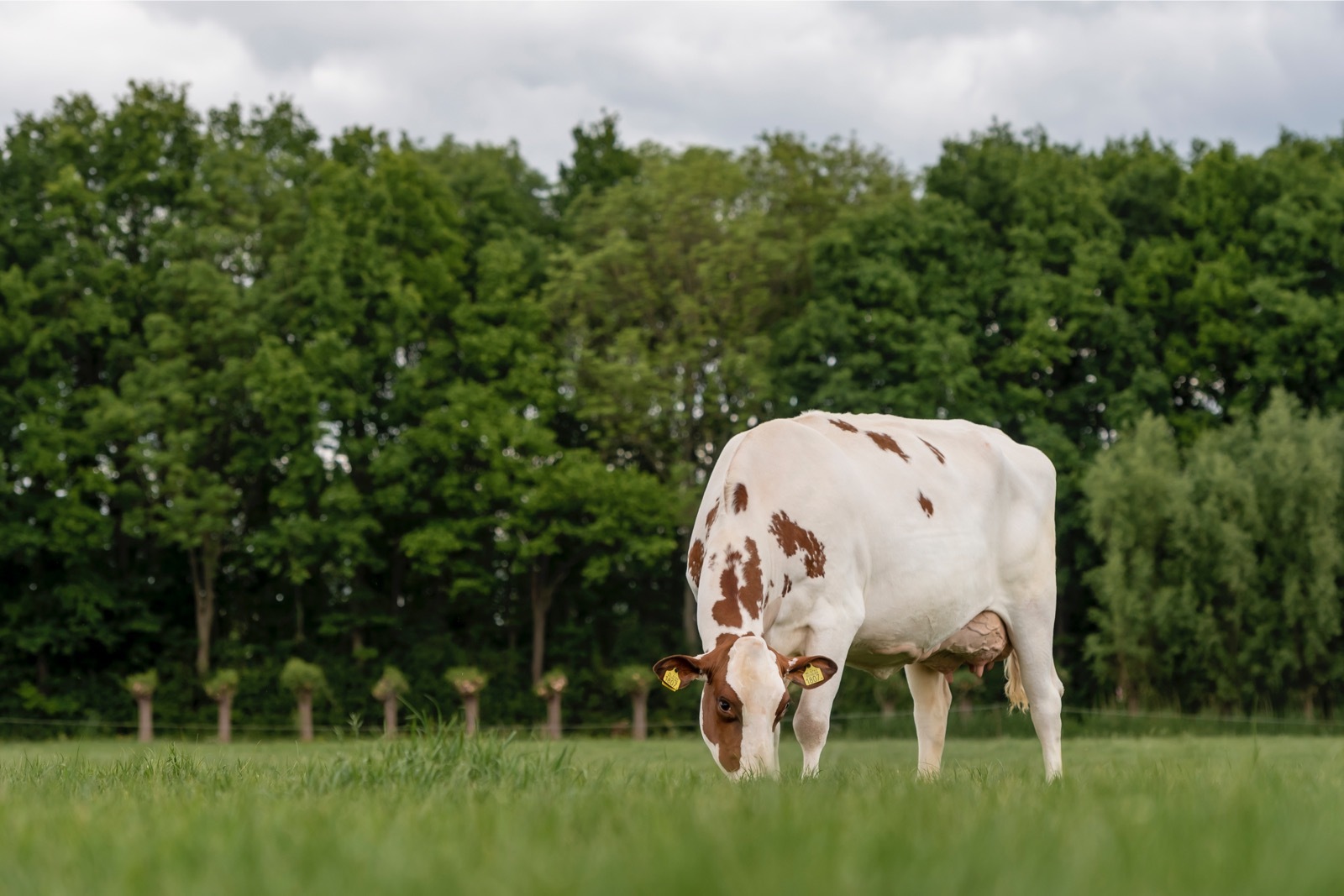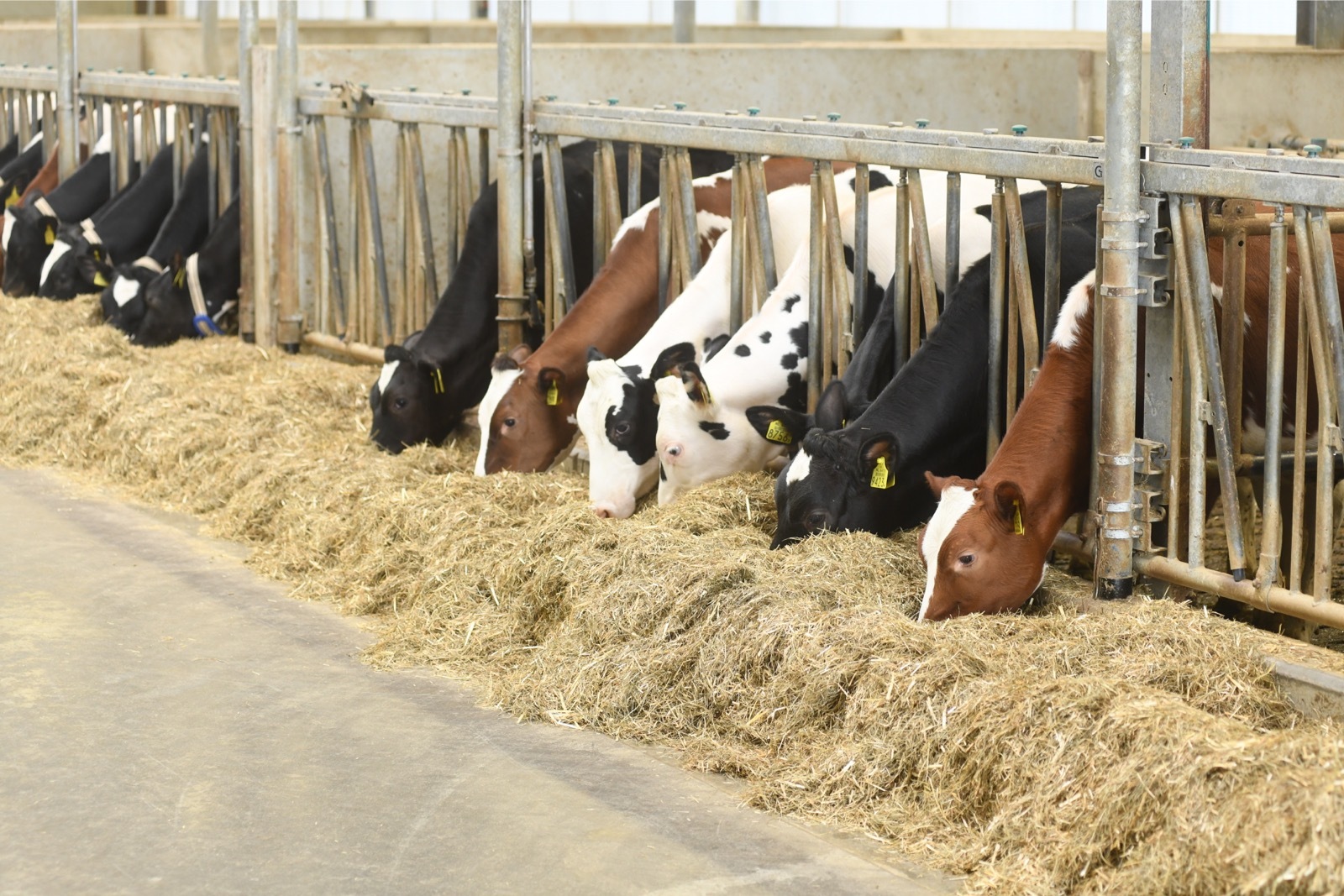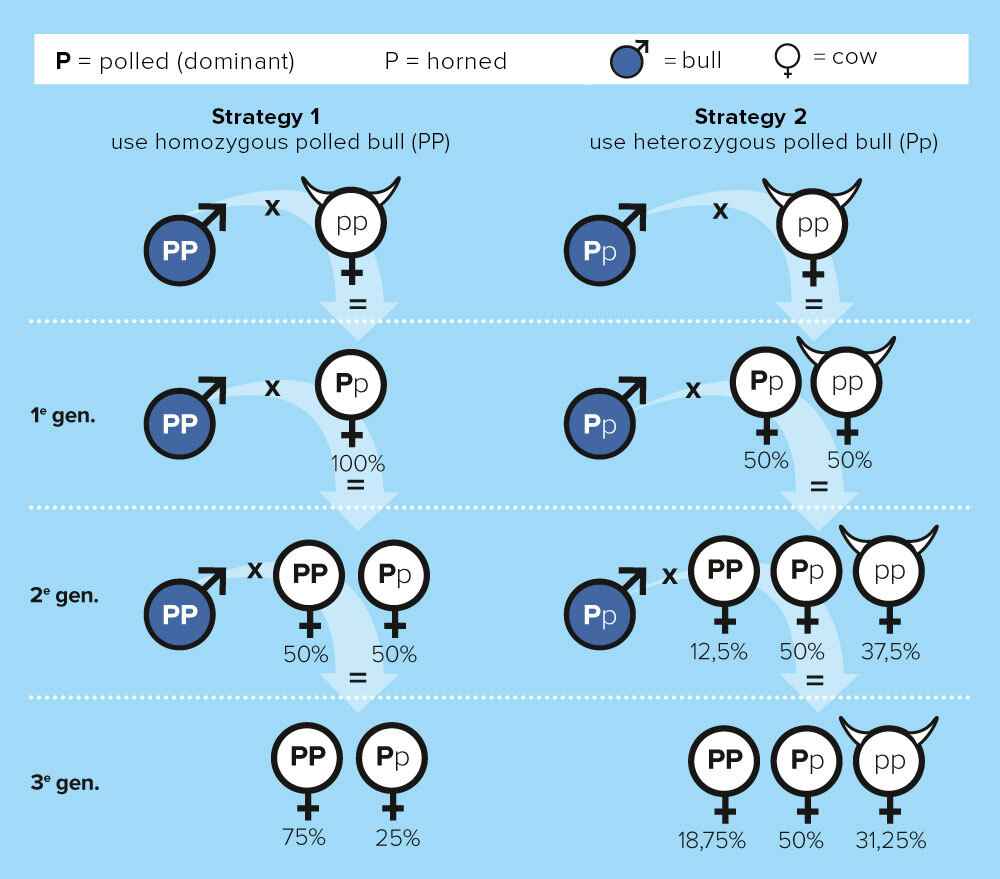After the index run in August, CRV was able to add a number of excellent bulls that pass on polledness to the range of both red-and-white pied and black-and-white pied bulls. Joris van Laerhoven, livestock management specialist at CRV, has noticed that the demand for this type of bull is increasing. 'On the one hand, it’s related to political discussions about animal welfare. There’s a group of livestock farmers who want to be ready if disbudding is restricted in the future,' he notes. 'On the other hand, the increasing demand is related to the continual improvements in the levels of the bulls with P and PP.'
Range of polled bulls grows in length and breadth

Twelve years ago, CRV decided to introduce the polledness trait into the Holstein breeding programme. This involved investing immediately on bulls that could compete with horned bulls in terms of breeding values. This has resulted in a strong, wide range of bulls with P and PP behind their names.
Polledness as a bonus
'The black-and-white Delta Nippon P and Delta Abundant P and the red-and-white Delta Launch PP are currently among the most commonly used bulls,’ says Van Laerhoven, giving an example. 'That is certainly not solely due to the fact that they pass on the polledness gene. These bulls simply have excellent breeding values for traits that farmers find important. The users of these bulls accept the polledness gene as a kind of bonus.’
According to Marcel Fox, senior product development officer at CRV, it is no coincidence that CRV can offer several highly competitive polled bulls. This breeding technician has been involved in the introduction of polledness into the breeding programme from the outset. 'When we started with this in 2009, the first polled bulls with a reasonable level became available. At the same time, we noticed discussions arising about disbudding calves, also in neighbouring countries,’ he explains. ‘If disbudding is ever banned, then breeding for polledness is a less drastic solution than adapting livestock sheds,’ according to the breeding technician. 'CRV wants to be in a position to provide livestock farmers with a wide, high-quality range of polled bulls if demand for them grows.'
Difference in level bridged
‘We focused on using polled bulls on our top donors from the outset. We wanted to bridge the difference in breeding level between horned and polled animals as quickly as possible,' explains Fox. 'We are now about six generations further, and polledness has been introduced in a large number of maternal lines. The difference in the technical breeding level between horned and unhorned animals has also virtually disappeared. About a third of the donors at the Dairy Breeding Center in Wirdum are already polled,' he says. ‘That means that we have more and more selection room to breed tall polled bulls.'
In the most recent index run, a number of interesting young polled bulls surfaced again. As an example, Fox points out the red-and-white Delta Taskforce P, number two in the NVI ranking, and Delta Cartoon P, now the tallest polled bull in Germany. Among the black-and-white genomic bulls, Delta Fair Play P, a Woody son with a flawless profile, made his debut.
Blood distribution guaranteed
Because polledness is a dominant inheritance, livestock farmers can breed the trait into their herd relatively quickly (see box). 'HerdOptimizer can also be a useful tool here,' says Van Laerhoven, livestock management specialist. ‘Marker research can quickly identify if a calf is genetically polled, and whether it is heterozygous or homozygous. By only breeding further with polled animals and deliberately mating for polledness, you can achieve results very quickly,' he explains. 'Homozygous polled animals, for example, can be mated with a horned bull in all confidence. The calf from such a mating will always be polled.'
Sometimes, it is argued that polled bulls have too narrow a bloodline, and that they therefore should not be used. Van Laerhoven refutes this emphatically. 'It’s true that the population of polled bulls was initially limited, but we’re many generations further since polledness was first introduced into the breeding programme. As a result, the blood distribution within the current range of polled bulls is certainly not inferior to that within the range of horned bulls,' he explains. ‘I’d even go further; farmers who have never used polled bulls can actually achieve slightly better blood distribution by using a polled bull.'

Polledness also in other breeds
Breeding for polledness is not limited to the Holstein breed. CRV also has seven polled Fleckvieh bulls in its range, including the homozygous polled top bull Hongkong PP. Five bulls with P or PP are listed on the card for Jersey breeding. Polledness has also been introduced into their Meuse-Rhine-Issel herd by various breeders. One of the results of this is that the bulls Mirakel P and Primeur P are now available.
Polledness is a dominant gene in inheritance
Inheriting polledness is relatively simple, as just one dominant gene is needed for the polledness trait. This means that calves that receive the polledness gene from either one of the parents are always born without the ability to grow horns.
The genetic predisposition to polledness is indicated by the capital letter P, short for polled. If a calf receives a P from both its sire and its dam, the animal is homozygous polled and is given the letters PP after its name. Because polledness is a dominant inheritance, all offspring of a homozygous polled animal will be born without horns. If a calf inherits the polledness gene from just one of the parents, it gets the letter P after its name. It is then called heterozygous polled. It does not need to be disbudded, and 50% of its offspring will be born without the ability to grow horns.
The quickest way to get a polled herd is by using homozygous polled (PP) bulls. (strategy 1) All heifer calves born from this are polled. If these are then paired again with a PP bull, half of the offspring will be PP. These homozygous polled cows could even be mated with horned bulls, without any of the calves having to be disbudded.
If exclusively heterozygous polled bulls are used, half of the calves are polled in the first generation and almost 70 percent after three generations (strategy 2). Only breeding polled animals further causes this figure to grow even faster, but a farmer can of course also use a mix of homozygous and heterozygous polled bulls.

